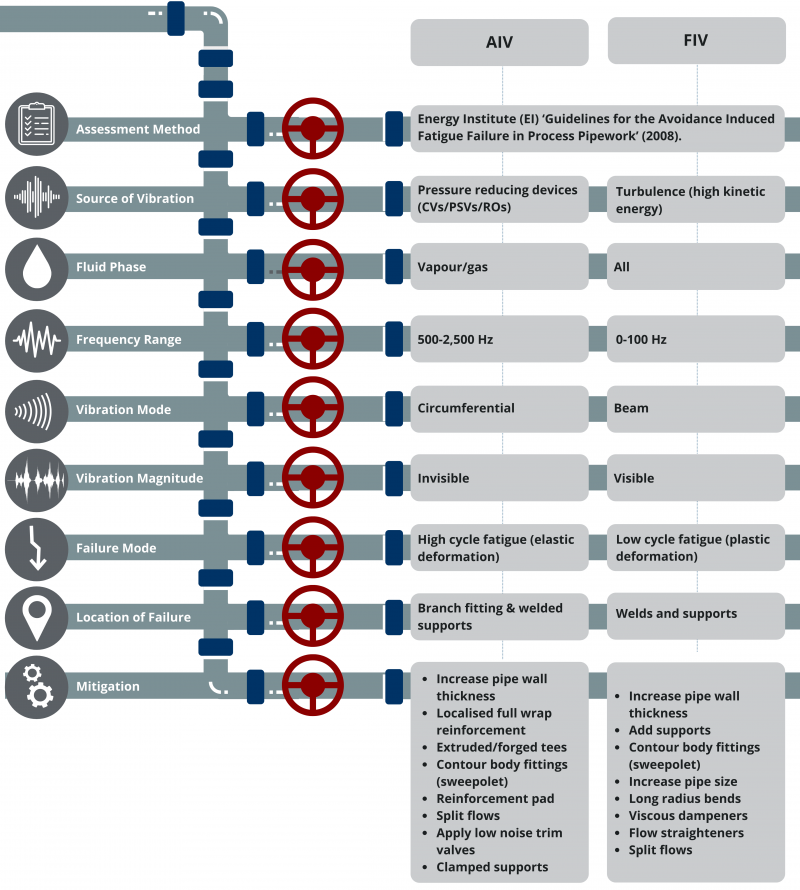Differences between AIV and FIV
(by Richard Palmer, WKC Group)
Every object/substance, has a natural frequency at which it is “willing” to vibrate. When an external agent applies a forced vibration that matches this natural frequency the object begins to vibrate, this is known as resonance. It is the energy in the fluid that induces the vibrations.
Two of the most common piping induced vibration studies we conduct at WKC are Acoustic Induced Vibration (AIV) and Flow Induced Vibration (FIV). Although both are classified as flow induced excitation mechanisms by the Energy Institute Guidelines, how the excitation is created, how the pipe responds to the vibration and the control measures that are applied to minimise the excitation are very different.
Acoustic Induced Vibration
AIV occurs in emergency or upset conditions where there is a requirement for rapid depressurisation of gas systems which results in large mass flow rates and large-pressure losses. High pressure drops result in the generation of high frequency acoustic energy. The high-frequency acoustic waves (500–2,500 Hz) tend to extend outward radially in the fluid and thus vibrate piping around the full pipe circumference, where sufficient dynamic stresses are present this can lead to piping failure.
Flow-Induced Vibration
FIV occurs due to pressure pulsation in the flow that cause the pipe to vibrate, (whether it be the main pipe run, or subsequent attached branches or fittings). It is at locations where high velocities and substantial mass flows generate significant amounts of kinetic energy that are most susceptible. Turbulence is generated at flow discontinuities, leading to vibration with frequency typically <100 Hz. This often results in the permanent deformation of pipes with a subsequent loss of product, assets, and revenue.
The figure below summarises the differences between AIV and FIV.


